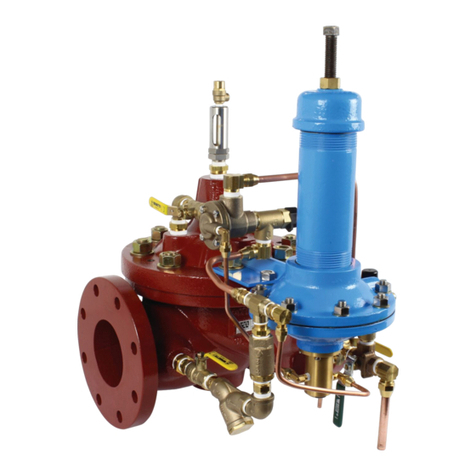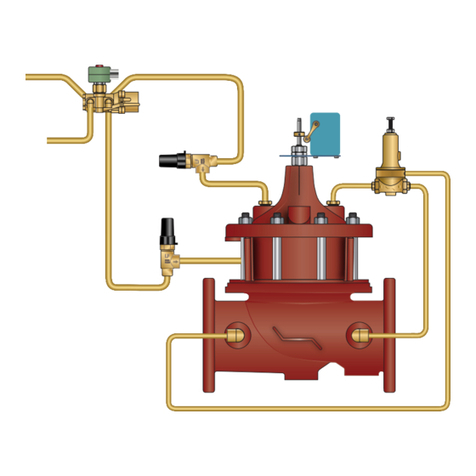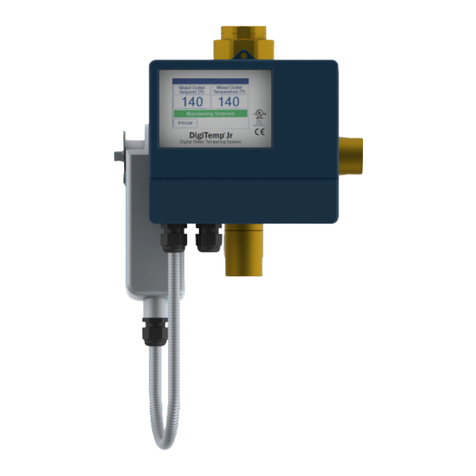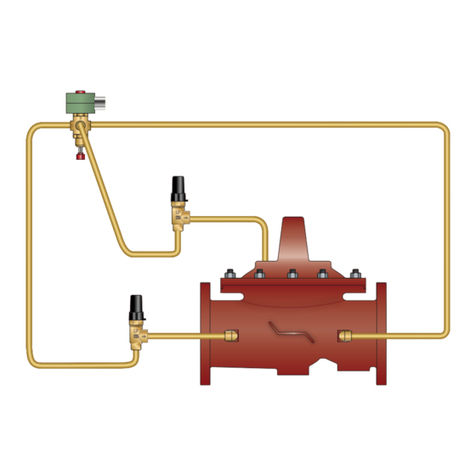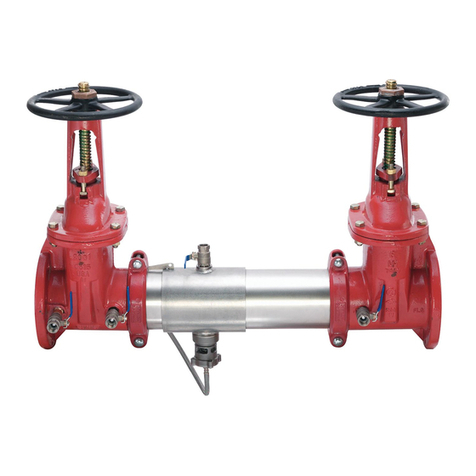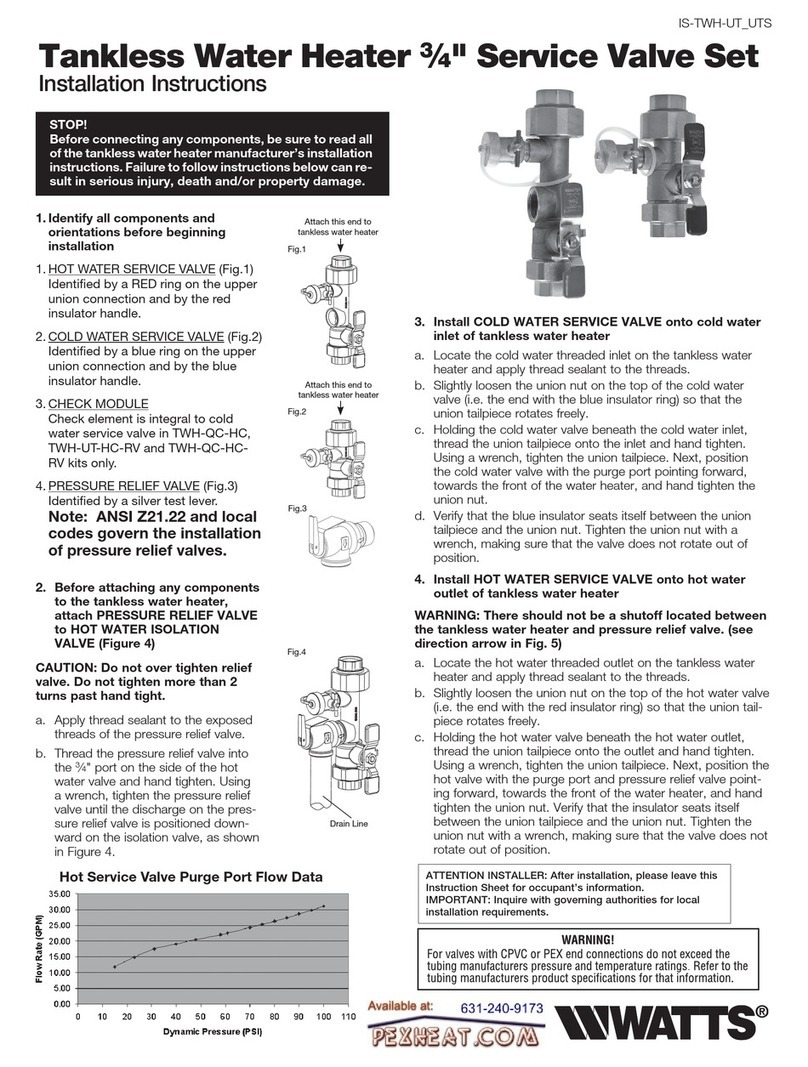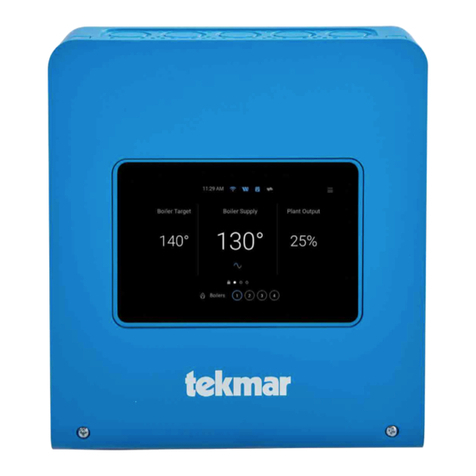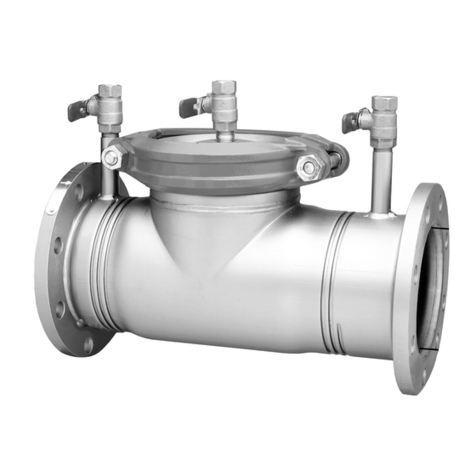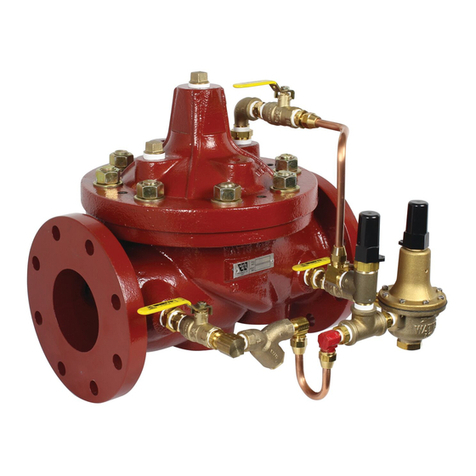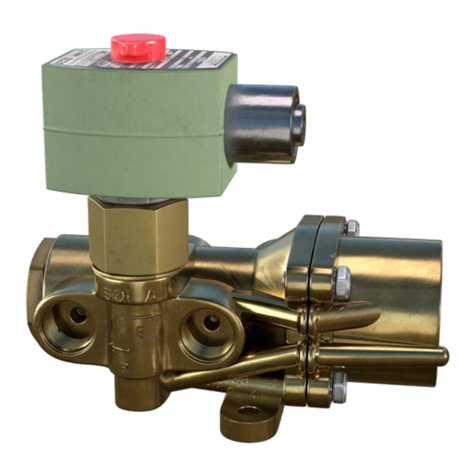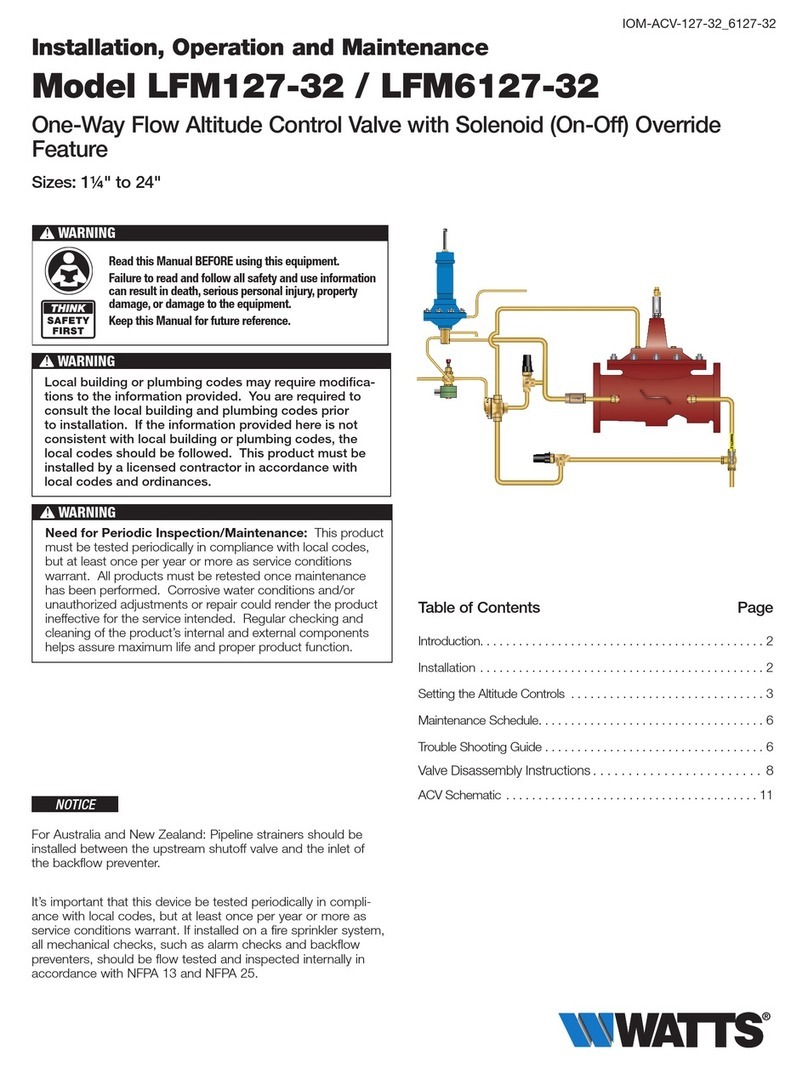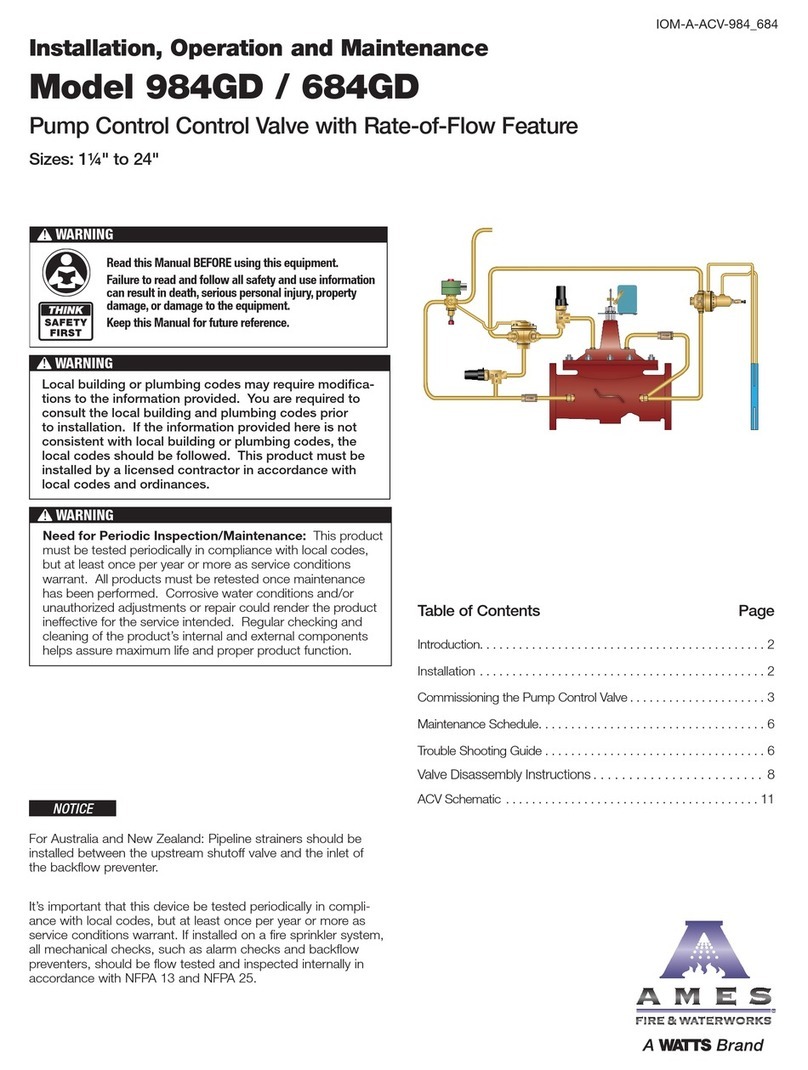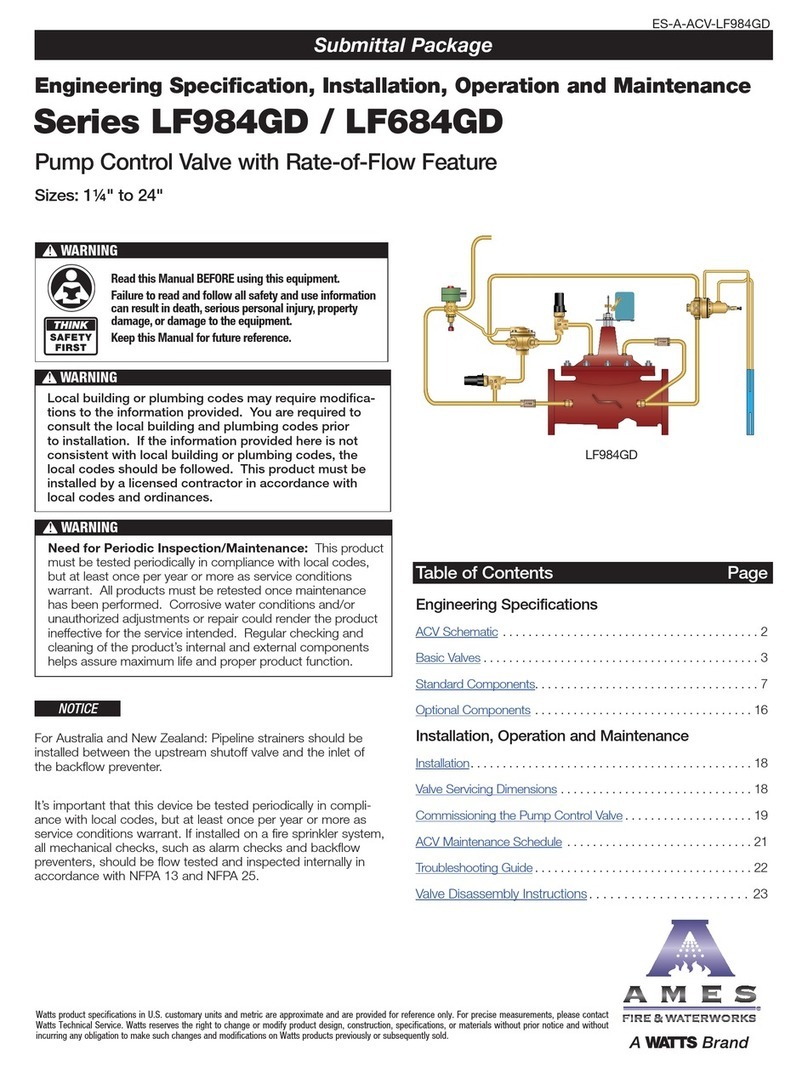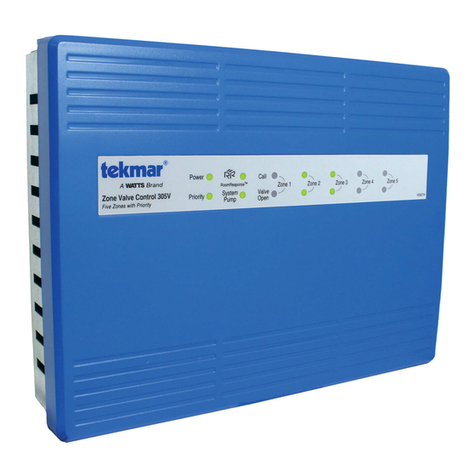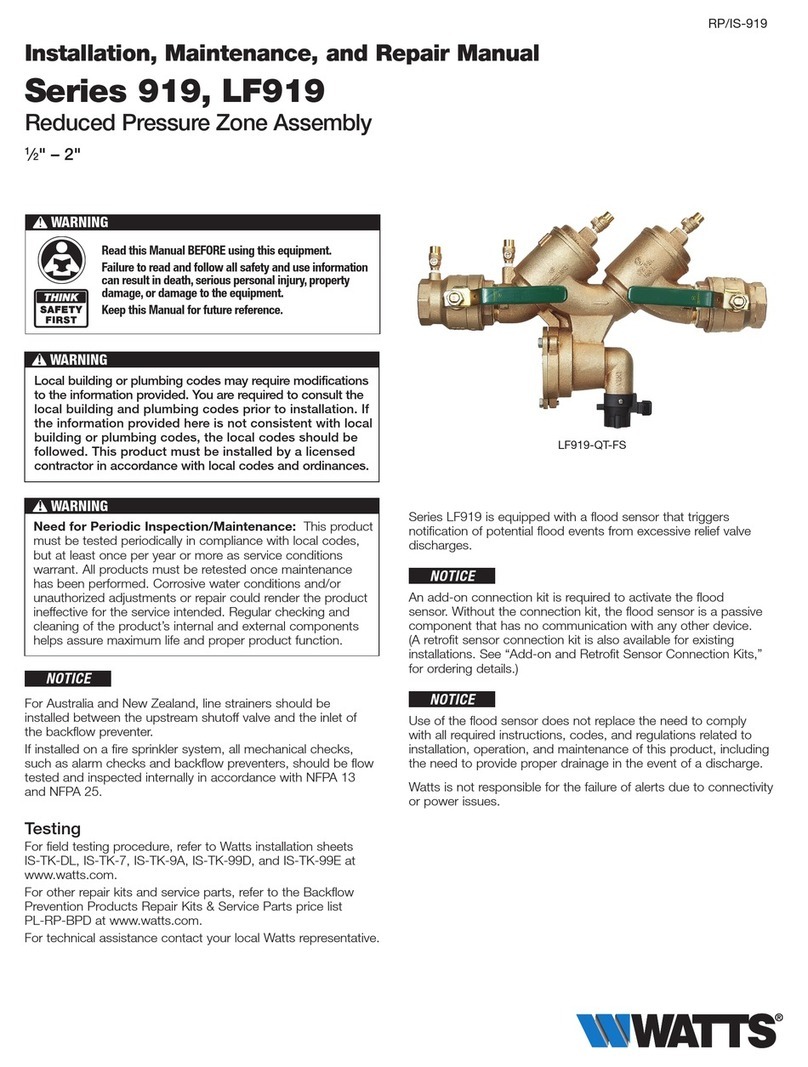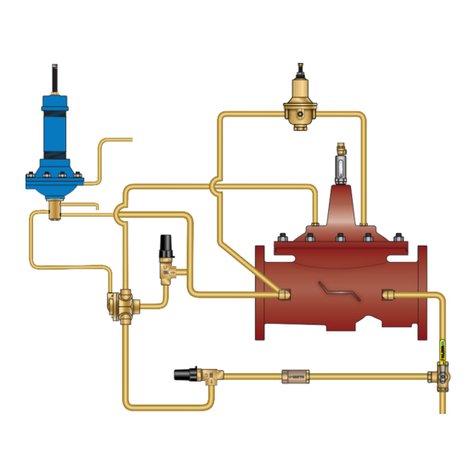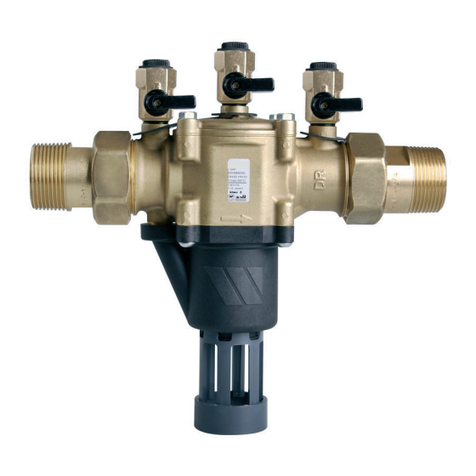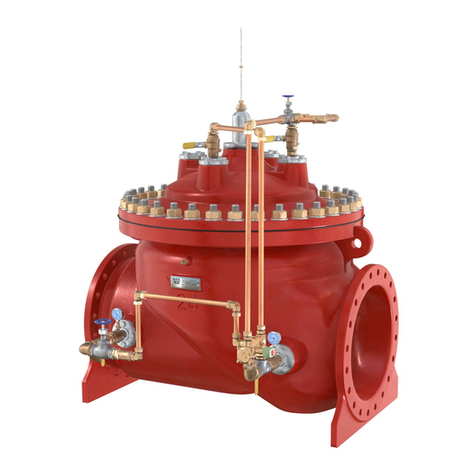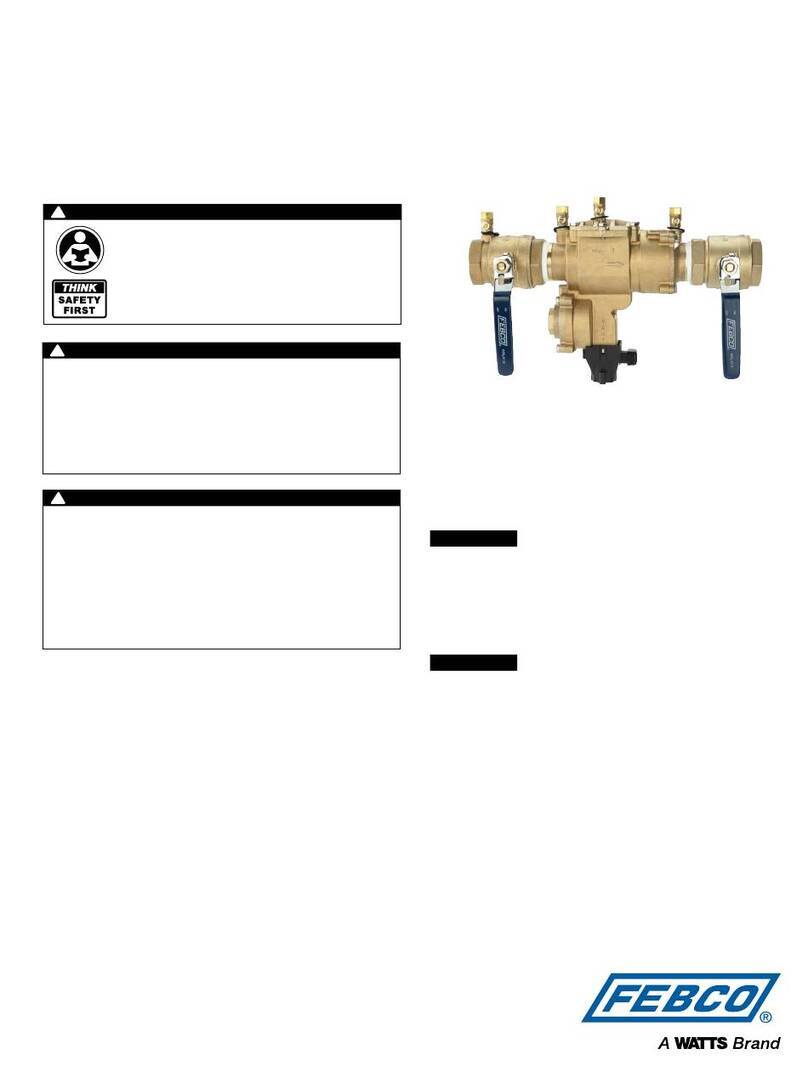
3
Parallel Installations
Two or more Series 709 devices may be piped
in parallel (where approved) to serve a large
supply pipe main. This type of installation
is employed whenever it is vital to maintain
a continuous supply of water where inter-
ruptions for testing and servicing would be
unacceptable. It also has the advantage of
providing increased capacity where needed
beyond that provided by a single valve.
For two valve installations the total capacity
of the devices should equal or exceed that
required by the system. Capacity table shows
the size of the No. 709 devices required to
meet a certain capacity. The quantity of
devices used in parallel should be deter-
mined by the engineer's judgement based
on the operating conditions of a specic
installation.
Watts 709S
21⁄2" - 10"
The following Test Procedure is one of several that is recognized
throughout the United States for verication of the functioning of
Backow preventers.
The following procedure is not a specic recommendation. The Watts
series of test kits are capable of performing any of the recognized
Backow test procedures.
A. Flush all test cocks
B. Turn tester on (before connecting hoses). Tester must read
all zeroes. Close VA and VB.
Test No. 1 - Test No. 1 Check Valve
1. Install high side hose between testcock No. 2 and
tester connection A.
2. Install low side hose between testcock No. 3 and
tester connection B.
3. Open testcock No. 2 then VA, bleed hose then close VA.
4. Open testcock No. 3 then VB, bleed hose then close VB.
5. Install a bypass hose between VB and testcock No. 1.
Open testcock No. 1 and bleed by loosening hose
connection at VB. Tighten hose connection, fully open VB.
Push - Print Head (wait) then Push - Start Test
6. Close shutoff valve No. 2 then No. 1.
7. Slowly open VA and lower high side pressure about
-2 psid below the low side pressure (differential read
ing about -2.0 psid). Close VA. If reading is maintained,
record as “tight”. If reading returns to 0 and the
pressure A increases to pressure B, the check is
recorded as leaking. If the reading returns to +psid,
No. 2 shutoff valve is leaking excessively and must be
replaced to test the valve.
8. Close all test cocks, remove hoses from testcock No. 2
and testcock No. 3 and testcock No. 1. Reopen
shutoff valve No. 1. Proceed to Test No. 2.
Push - Stop Test.
Test No. 2 - Test No. 2 Check Valve
1. Install high side hose between testcock No. 3 and
tester connection A.
2. Install low side hose between testcock No. 4 and tester
connection B.
3. Open testcock No. 3 then VA, bleed hose then close VA.
4. Open testcock No. 4 then VB, bleed hose then close VB.
5. Install a bypass hose between VB and testcock No. 1.
Open testcock No. 1 and bleed by loosening hose
connection at VB. Tighten hose connection, fully open VB.
Push - Start Test
7. Close shutoff valve No. 1.
8. Slowly open VA and lower high side pressure about
-2 psid below the low side pressure (differential read
ing about -2.0 psid). Close VA. If reading is maintained,
record as “tight”. If reading returns to 0 and the
pressure A increases to pressure B, the check is
recorded as leaking. If the reading returns to +psid,
No. 2 shutoff valve is leaking excessively, and must be
replaced to test the valve.
Push - Stop Test.
VA ABVB
TK-DP
Test Kit
Capacity Required for System
450 GPM 640GPM 1000GPM 2000GPM 3000GPM 5000GPM
Two 21⁄2" Two 3" Two 4" Two 6" Two 8" Two 10"
Devices Devices Devices Devices Devices Devices
Table shows total capacity provided with dual valve installations of various sizes.
Basic Installation Instructions (cont.)
Test Procedure for Double Check Valve Assemblies
using Watts TK-DP and TK-DL Test Kit
RP-IS-709_709DCDA.indd 3 9/26/08 2:28:14 PM
